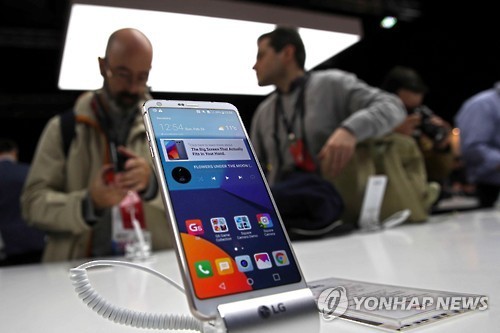The global OLED market for smartphones, currently dominated by Samsung, is about to get a little more crowded with LG Display recently throwing its hat into the ring.
LG Display has started supplying its organic light-emitting diode products to Chinese handset makers and is gauging potential partnerships with Apple and Google, according to news reports and industry sources.
“LG Display confirmed the supply of OLED panels to Xiaomi and it is in talks with other Chinese handset makers for further supply,” a source was quoted as saying in local news reports Wednesday.
LG Display has started supplying its organic light-emitting diode products to Chinese handset makers and is gauging potential partnerships with Apple and Google, according to news reports and industry sources.
“LG Display confirmed the supply of OLED panels to Xiaomi and it is in talks with other Chinese handset makers for further supply,” a source was quoted as saying in local news reports Wednesday.

The OLED market for smartphones has so far been led by Samsung with a more than 95 percent share, according to research firm IHS. However, things may change in the future, analysts said, as LG display, which has been a strong player for OLEDs for televisions, will soon be ready to mass produce flexible OLEDs for smartphones from this year.
Apart from the Chinese handset makers, LG Display is also reportedly in talks with its longtime liquid crystal display client Apple, which recently decided to use OLEDs for its new iPhone 8, instead of LCD, for the panel’s flexible characteristics.
Apple reportedly does not want to solely rely on a single vendor, Samsung, which is having a hard time meeting growing demand for flexible panels.
LG Display plans to make a decision on its OLED production line P10 regarding production technology, capacity and investment scale during its temporary board meeting slated for June.
LG Display was not available for comment on the reports.
Analysts said LG Display has a high potential in the future flexible OLED market due to its technology development and a high entry barrier.
“We are paying attention to the potential of LG Display’s flexible OLED capacity. If the firm is able to expand its market share through independent technology development and business partnership with rival companies, its share price will see a significant rise,” said Park Yoo-ak, an analyst at Kiwoom Securities.
Samsung Securities’ analyst Jang Jeong-hoon said, “Flexible OLED has a high entry barrier. Since LG Display’s yield for flexible OLED is being gradually improved, the firm is likely to emerge as a competitive supplier in the second quarter of 2018 when its production line, E6, begins.”
LG Display has a production line, E5, in Gumi, which is set to run in the third quarter. It is capable of producing OLED panels for around 54 million smartphone units annually. The line is expected to be used for Xiaomi.
The display maker is also building a new production line, E6, in Paju, which is capable of supplying OLED panels for 100 million smartphone units annually. Mass production is expected to begin in the second quarter of next year.
Last week, Google reportedly proposed to LG Display an investment of at least 1 trillion won ($876 million) in the production of flexible OLED panels for its new smartphone Pixel. If confirmed, LG Display could produce flexible OLED panels for around 3 million smartphones monthly with the investment.
By Shin Ji-hye (shinjh@heraldcorp.com)




![[Herald Interview] 'Amid aging population, Korea to invite more young professionals from overseas'](http://res.heraldm.com/phpwas/restmb_idxmake.php?idx=644&simg=/content/image/2024/04/24/20240424050844_0.jpg&u=20240424200058)













![[KH Explains] Korean shipbuilding stocks rally: Real growth or bubble?](http://res.heraldm.com/phpwas/restmb_idxmake.php?idx=652&simg=/content/image/2024/04/25/20240425050656_0.jpg&u=)

